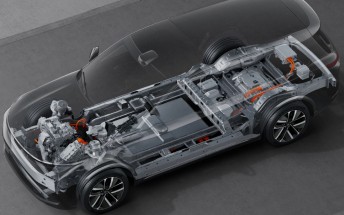Qualcomm's new Oryon-based chipsets will have 8 and 10 core variants too, not just 12 core CPUs

We’ve been hearing about Qualcomm’s new Oryon cores for a while now – the first custom high-performance ARM cores developed by the company since the original Kryo. It will be featured in chipsets aimed at Windows devices that are code named “Hamoa”. Previously, we only knew of a 12-core design, but new information suggests that Qualcomm will come out of the gate with a larger roster.
The following numbers have been seen in internal documents by WinFuture: SC8350, SC8350X, SC8370, SC8370XP, along with the SC8380 and SC8380XP. The last two are the original 12-core variants and will feature eight high performance cores and four efficiency cores.
The SC8350 and SC8370 will have four and six performance cores, respectively. This will be padded out with a fixed number of four efficiency cores. Apparently Qualcomm will bin the chips according to clock speed too, so some of these could be “plus” versions with the same number of cores running at higher frequencies.

The two 12-core variants should be marketed under the Snapdragon 8cx Gen 4 branding (again possibly with a plus in there). The others should spread out into lower series like the Snapdragon 8c and 7c.
It’s not clear whether all these chipsets will launch simultaneously or whether the documents included future releases too. But the new Hamoa chips are expected to be presented in October, possibly during the same event that brings the Snapdragon 8 Gen 3. The first Hamoa-powered devices are expected in early 2024.
Source (in German)
Related
Reader comments
- Anonymous
- 10 Aug 2023
- ntJ
Need to point out that this is not for Android. This is for Windows on ARM (and potentially ChromeOS on ARM as well).
- Flecken
- 09 Aug 2023
- XVS
The cache thing might be true, more is usually better but larger cores are bad I think for 2 main reasons: cost and complexity. They're more expensive because they take physically more space on each wafer so you get higher cost per core. But if ...








 Xiaomi
Xiaomi Samsung
Samsung Apple
Apple Realme
Realme Apple
Apple


